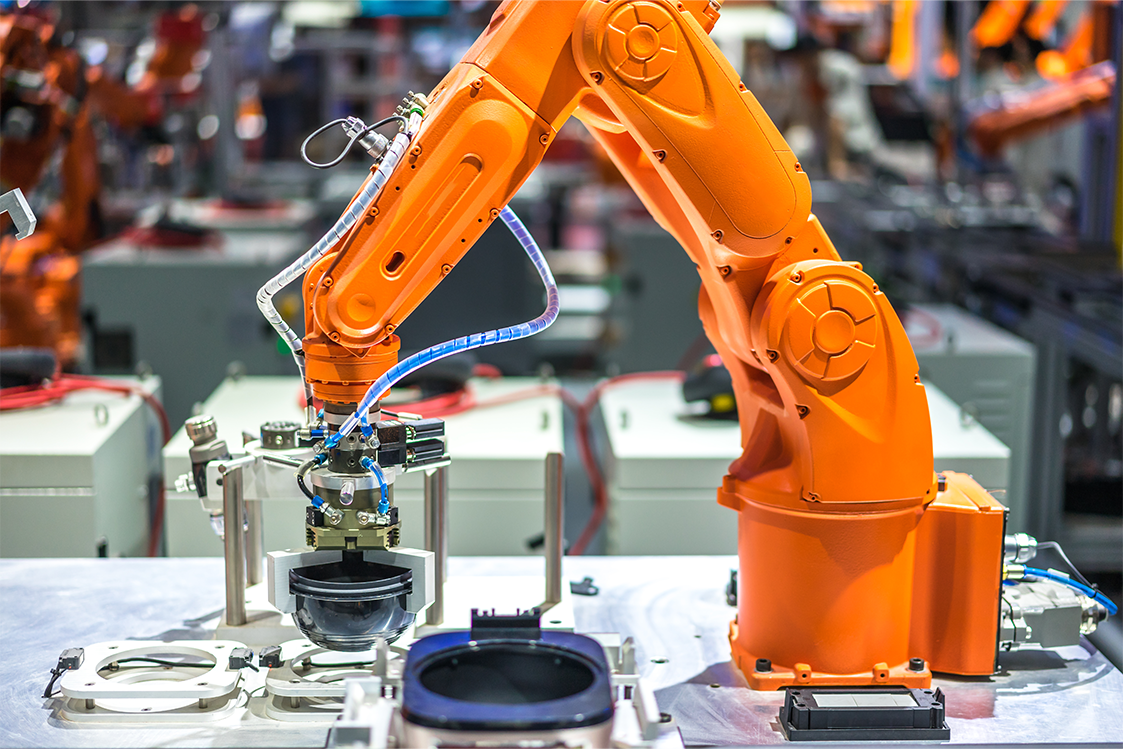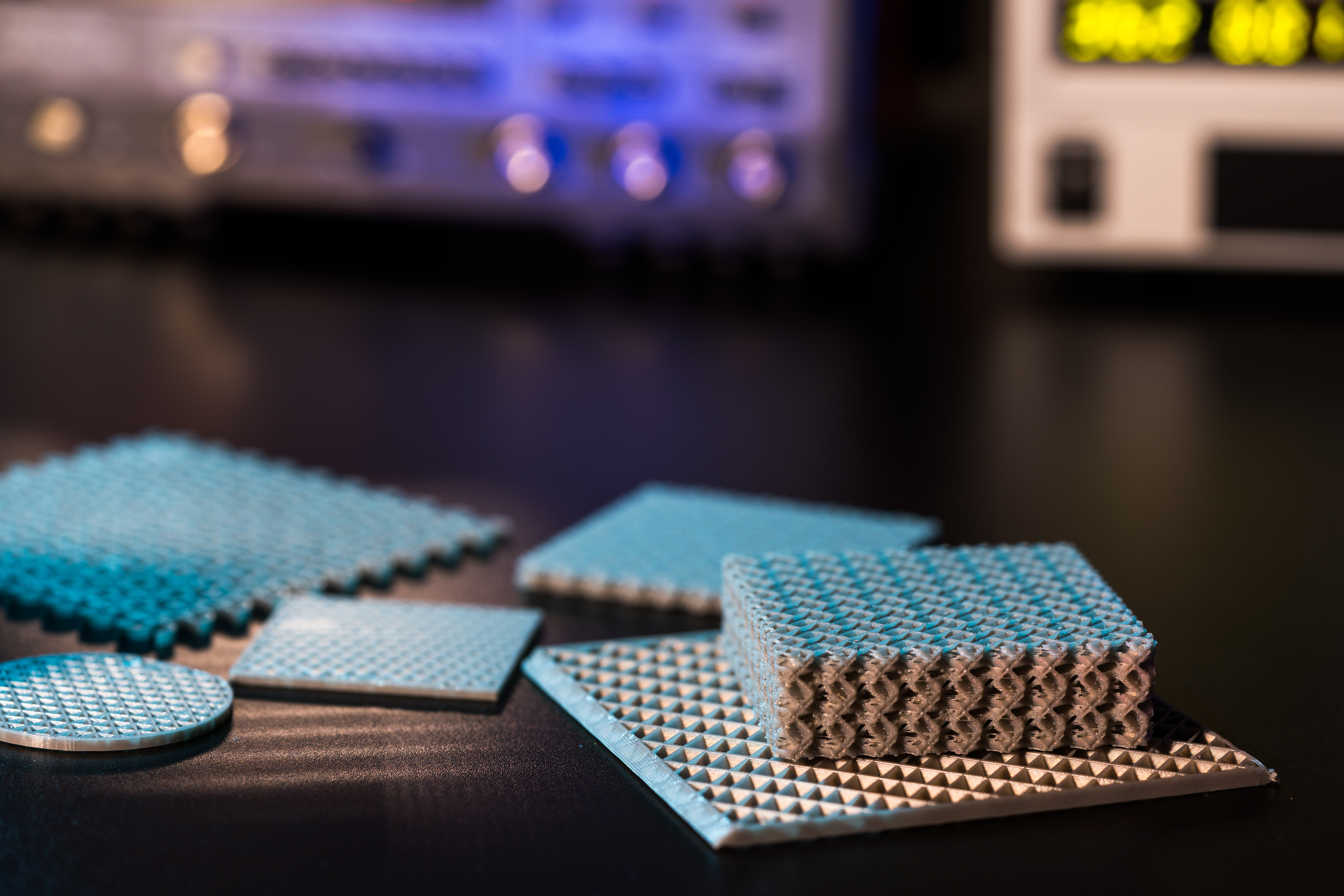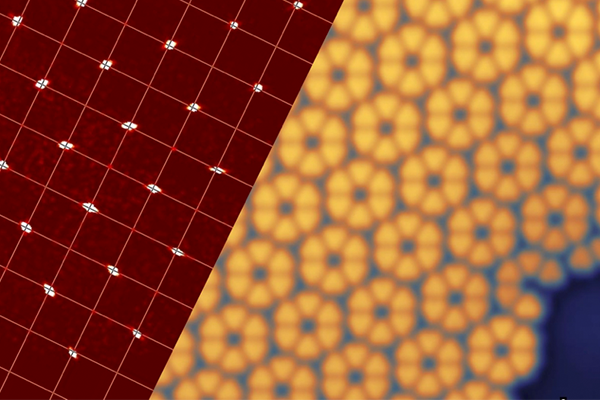Research Overview
Materials research at Georgia Tech is comprehensive, addressing the major technologies that can improve our lives in the next century and beyond. It ranges from advances in polymers and macromolecules, to nanostructures and materials for engineered devices, to materials and interfaces for catalysis and separations, to functional electrodes for batteries and fuel cells, to functional photonic and electronic materials, to advanced structural materials, to name a few.

Materials for Solar Energy Harvesting and Conversion
Juan-Pablo Correa-Baena is working to create a community around solar energy harvesting and conversion at Georgia Tech. He aims to integrate photovoltaic, photodetectors, and related devices into IMaT-related research; energize research in these areas at Georgia Tech at large; and consolidate the expertise of the many research groups working on or around photovoltaics/photodetectors that will allow us to target interdisciplinary research funding opportunities. He also wants to provide an official link at Georgia Tech for industry partners to interact with faculty on photovoltaics, with a special aim at First Solar and QCells, the largest solar panel factory in the western hemisphere.
Materials for Energy Storage
Investment in battery research and technology is rapidly growing, and Georgia Tech’s strong energy storage research community is well positioned to make an impact in the development of next-generation energy storage devices. Initiative lead Matthew McDowell foresees that IMat and the Strategic Energy Institute (SEI) could both play important roles in enabling the formation of an energy storage initiative that will bring the community together and provide improved external advertisement of Georgia Tech’s capabilities for energy storage research.

Autonomous Research for Materials
Mark Losego will help build a community at Georgia Tech that works toward developing autonomous and intelligent systems (robots) that execute physical experiments — processing, characterizing, and measuring the properties of materials — and then uses this knowledge to iteratively and intelligently execute subsequent experiments that produce new knowledge about process-structure-property relations, which inform materials discovery and design. He also hopes to learn what technical questions, training opportunities, or other incentives would compel Georgia Tech roboticists to collaborate with materials scientists to develop autonomous materials discovery systems and what the Georgia Tech materials community can do with emerging, inexpensive, and simple-to-use robotics systems to drive autonomous materials discovery.

Organic Photonics and Electronics
Emerging semiconductor materials open new pathways and opportunities to address critical national needs with global societal impacts in climate change, manufacturing, energy, healthcare, information science, consumer applications, defense-wide applications, and many others. Jason Azoulay will work across multiple Georgia Tech centers, topical working groups, and institutes to create a unique materials research environment that spans traditionally siloed disciplines and materials classes. These efforts will advance the chemistry, materials science, and application of emerging photonic, optoelectronic, semiconductor, spin-based, and quantum technologies and raise the recognition of the materials innovations at Georgia Tech to the international stage.

Mechanical Metamaterials
Zeb Rocklin aims to bring faculty together within the Colleges of Sciences, Engineering, and Design to develop, characterize, and apply novel metamaterials — those with programmed structures above the atomic scale, blurring the line between material and machine. They can reveal fundamentally new physics while also incorporating new functionality for flexibility, strength, and intelligent processing of mechanical force and energy.

Macromolecular Materials at Biotic and Abiotic Interfaces
Valeria Milam will work to build an inclusive and active community across and beyond Georgia Tech to identify emerging research directions in macromolecular materials. Macromolecules, whether natural, bio-inspired, or completely synthetic, hold promise for enabling the next generation of materials to successfully perform at biotic as well as abiotic interfaces. Motivated by broad applications ranging from health to the environment, this initiative will bring together experimental and computational engineers and scientists focused on fundamental studies of macromolecular systems. The goal is to identify pathways to novel compositions, structures, synthesis, and characterization approaches to designing and implementing macromolecular materials.

Materials and Interfaces for Catalysis and Separations
To mitigate issues related to climate change, there is a societal push to reach net zero carbon emissions by 2050. Thermal separations and catalysis are the primary sources of carbon emissions in industry today. Thus, there is a growing research focus on developing next-generation materials for net-zero catalysis and separation processes. Marta Hatzell is working to bring faculty together who are working on materials-related issues aimed at decarbonizing industrial separations and catalysis, identifying the bottlenecks for new materials, and assessing their long-term impacts.

Materials in Extreme Environments
Richard W. Neu will engage and build an interdisciplinary research community to address the complex issues associated with new materials in extreme environments. These environments include high temperature, high pressure, corrosive, wear/erosion, cyclic loading, high-rate impacts, and radiation. The materials are continuously evolving and deforming in these harsh environments, which presents a roadblock in advancing engineering systems due to the uncertainty in the performance of new materials or new process methods such as additive manufacturing. Managing this risk by predicting the uncertainties, both internal to the material (its structure feature) and external environment, is an important consideration that materials engineering must address.

Quantum Responses of Topological and Magnetic Matter
The goals of this initiative are two-fold. First, anchor, develop and promote the community of researchers working on the fundamental magnetic properties of quantum materials. Second, connect these researchers to application-centric initiatives led by other science or engineering colleagues across Georgia Tech. Zhigang Jiang is leading a team to focus on fundamental research progress in topological and magnetic matter and to communicate their importance, relevance, and significance to Georgia Tech’s research audience. In addition, this initiative aims to leverage fundamental discoveries in quantum materials and explore how these can be translated in their own right into quantum systems with new functionalities for spintronics, qubits, and electronic devices.
Materials for Biomedical Systems
W. Hong Yeo plans to foster collaborations between faculty, researchers, and clinicians to advance research in biomaterials and biomedical systems. He believes collaborative research environments between materials science/engineering and medicine will result in fundamental breakthroughs in bioinspired materials, human-centered designs, and integrated biomedical systems, which will significantly advance human healthcare. He also hopes to enhance human health via multidisciplinary materials research to tackle the National Academy of Engineering Grand Challenge to engineer better medicines in collaboration with both academic and industry partners.




